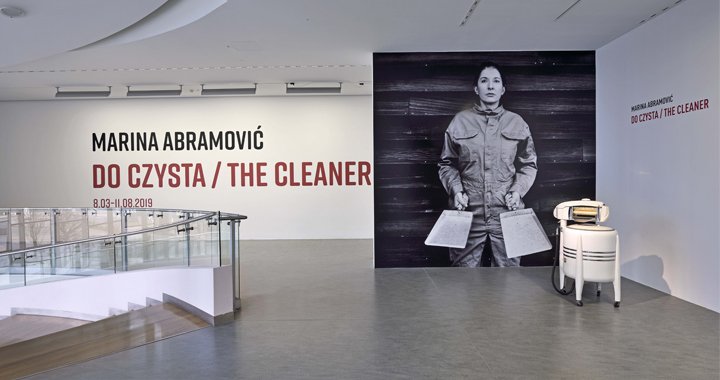
A priest doesn’t need a cross
Review of Marina Abramović, The Cleaner exhibition at the Centre of Contemporary Art in Toruń
12/07/2019
In 2010, Marina Abramović – one of the world’s most renowned and acclaimed living artists – sat motionlessly and silent every day during the opening hours of her major exhibition, The Artist is Present, at the Museum of Modern Art in New York City. An empty chair in front of her invited museum-goers to sit and gaze at her as long as they wanted, or could bear. For two and a half months, the artist looked in the eyes of over 1600 people (including Sharon Stone, Lou Reed, and James Franco) who were lucky and fast enough to have the privilege to take a seat in front of an icon of performance art. The exhibition attracted more than 850,000 visitors. People were lining up in front of the museum starting at five o’clock in the morning – the braver ones had already taken their spot at the front of the line at 10 pm the night before. There was excitement as well as tears and declarations of love. ‘Just as the face of someone who recently died can seem to flicker or move, so too her face seemed at times infinitely suggestive and vulnerable’, recounted Irish novelist Colm Tóibin. Even Abramović herself confessed that this work was the hardest by far in her five-decade long career, throughout all of which she has explored how much the human body and consciousness are capable of withstanding.
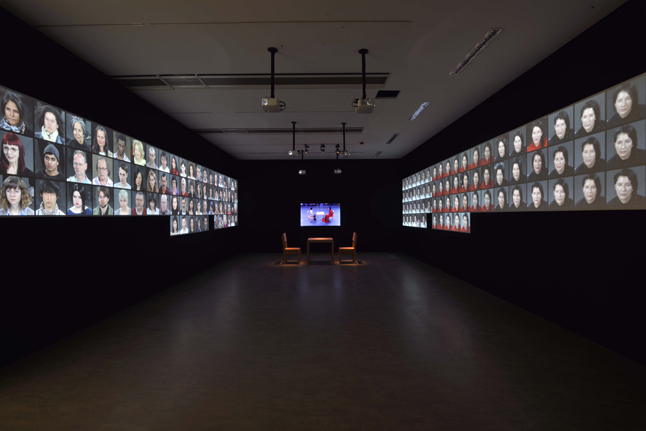
Marina Abramović, The Cleaner. Installation View. Centre of Contemporary Art, Toruń. Publicity photos
Nine years later, the replicas of the chair and table used for the performance The Artist is Present, alongside with portraits of the artist and participants, can be seen at Abramović’s retrospective The Cleaner, the current installment of which is on view at the Center of Contemporary Art Znaki Czasu in Toruń. This travelling exhibition, organised together with the Moderna Museet in Stockholm, in collaboration with Louisiana Museum of Modern Art in Humlebæk and the Bundeskunsthalle in Bonn, and put together in concert with Abramović herself, is, to date, the largest presentation of her oeuvre in Europe. Besides the cities of its organisers, The Cleaner was also staged at Henie Onstad Kunstsenter, 15 minutes west of Oslo, and Palazzo Strocci in Florence, and will finish its tour this autumn at the Museum of Contemporary Art in Belgrade, which is where, 73 years ago, Abramović was born. Poland is the only host of her show in the eastern part of Europe, so it’s no surprise that the exhibition at CoCA in Toruń was being hailed throughout the country as the most important art event of the year long before the public could even see it. ‘I had wondered if we could afford it, but I thought, “man can die but once”, so let’s give it a try!’ - said Wacław Kuczma, the director of Znaki Czasu, who also curated the Polish installment of The Cleaner.
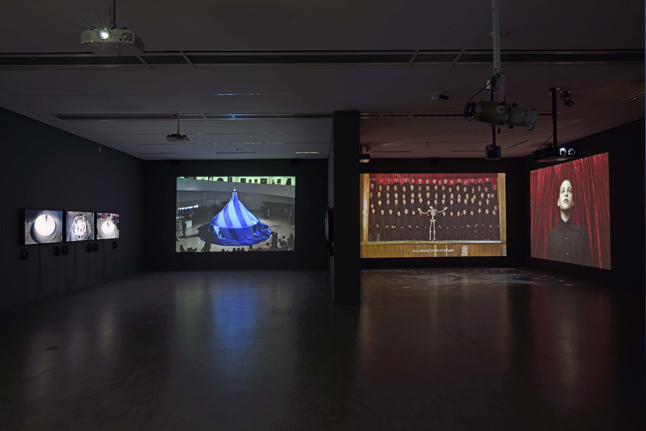
Marina Abramović, The Cleaner. Installation View. Centre of Contemporary Art, Toruń. Publicity photos
The artist herself was present at the opening ceremony. The fact that Marina Abramović appeared in CoCA and opened her exhibition in person was already of great importance. It is still a very rare thing for high-level international artists to favour Poland with their venerated presence. ‘We had to do a ticketed vernissage,’ explained Kuczma, ‘because for security reasons it was impossible to allow more than a certain number of people to get in. The tickets cost 50 zlotys, and those disappeared within 4 seconds. They were sold online. We thought that the internet portal had crashed, but it turned out that everyone had just clicked “buy” at the same time.’ While there was no shortage of people interested in seeing the queen of performance art (who, however, didn’t perform herself, and had instead chosen some of her works to be reenacted by a group of performers), the ticketed vernissage had raised many concerns and objections in the Polish media. ‘We want Marina, but we don’t want to take out a line of credit to see her. Most enthusiasts and art lovers are non-affluent people – do not forget about us, because we uphold the cultural sector with our work,’ wrote Polish novelist and feminist Sylwia Chutnik in her op-ed piece Why I will not take part in the vernissage of Marina Abramović on the pages of the widely read newspaper Wysokieobcasy.pl. ‘And while the internet is boiling with anger that performers who reenacted the performances of Abramović are rewarded with a rate of 25 euros per hour (which is considered low), we are not willing to spend 50 zlotys (12 euros) for meeting with the most outstanding body art artist,’ added journalist Paulina Reiter. Whatever the opinion of the public on that was, there is no doubt that the room where Abramović shared some of her views on art was filled to its capacity, ignoring the demonstrations going on outside the museum.
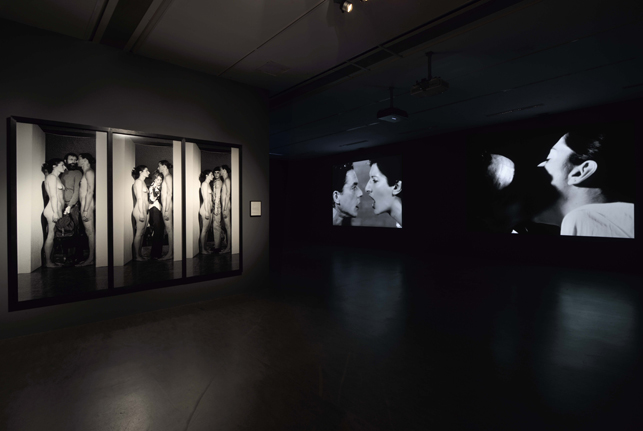
Marina Abramović, The Cleaner. Installation View. Centre of Contemporary Art, Toruń. Publicity photos
Those manifestations were fueled by the online posts that entered the picture right after the information about The Cleaner had been announced. The most controversial critique of the show came from far-right-oriented orthodox Catholics. In an article about the planned exhibition, Najwyższy Czas! (a Polish liberal-conservative sociopolitical magazine) wrote that Abramović ‘uses occult symbols and recreates, among others, Satanic rituals’ in her work, and reported the claim that ‘the artist has adopted the occult as performance art’. These claims were apparently made in reference to some of the artist’s works which can be seen on the internet, such as Lips of Thomas (1975), in which Abramović cuts a five-pointed star with a razor blade into the skin on her stomach, and Rhythm 0 (1974) in which, for six hours, Abramović allowed people to do whatever they wanted with her body using the tools she had made available, from wine and candles to a knife and other weapons.
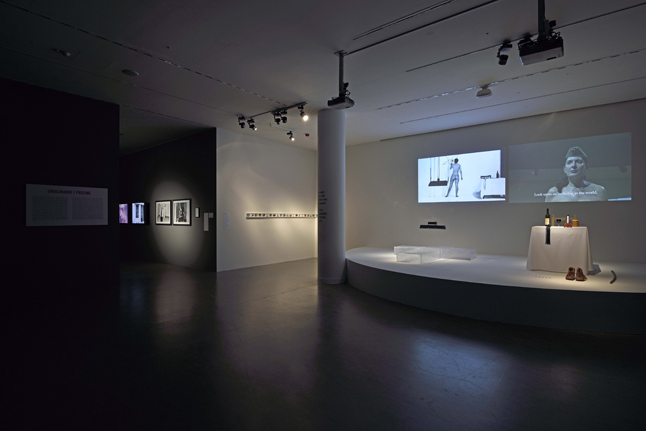
Marina Abramović, The Cleaner. Installation View. Centre of Contemporary Art, Toruń. Publicity photos
The Rosary Crusade for the Homeland protest was scheduled for March 8, exhorting their prayers around the building during the time of the vernissage. Appeals to participate were posted on social media and on the internet. ‘With this rosary, we will pray to rid this evil from our homeland – this evil that is happening here at CoCA, which is being funded by public money,’ said one of the participants. Accordingly, The Polish Ministry of Culture and National Heritage refused to subsidise the exhibition. ‘Father Tadeusz Rydzyk (founder and director of the conservative Radio Maryja) said that I am showing a Satanist here with money from Catholic believers. I wrote to the newspaper that the money comes not just from Catholics, but from all citizens, including atheists, and I am an atheist and this is also my money,’ said CoCA director Kuczma. ‘Poland is a very strange country,’ he added.
Next to the Rosary Crusade, a group of local feminists also protested, bearing a grudge towards Abramović for organising an exhibition at a gallery which is said to have a reputation for not giving enough value and attention to the work of female artists. Those dissenting voices arose primarily after the recent exhibition Why do we need freedom, anyway?, also curated by Wacław Kuczma, in which an insignificant number of women were asked to participate. There was even an official letter written to Abramović herself, signed by many Polish artists and curators, in which they warned her: ‘Your exhibition will legitimise this state; it will be an excuse; it will be a weapon against women.’ Abramović was also accused of choosing an unwise title – The Cleaner could potentially recall the traumatic fate of Poland from World War II to the currently volatile social and political situation. Last but not least, Dr. Katarzyna Lewandowska, from the Academy of Fine Arts in Gdańsk and a curator, activist, feminist, and initiator of the letter to Marina Abramović, said: ‘It hurt me what she said about being an artist and a mother’ (more on this can be found in an interview with Abramović in Der Tagesspiegel)[1].
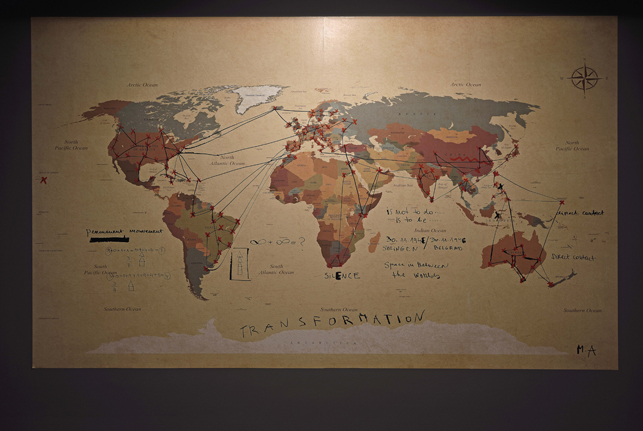
Marina Abramović, The Cleaner. Installation View. Centre of Contemporary Art, Toruń. Publicity photos
Everyone can have their own opinion, and we all – apparently – live in a free, democratic country, but it is worth reminding that Marina Abramović has never spoken about herself as a feminist. ‘I don’t consider myself “a female artist”. I am a female, but I am an artist. Because I don’t think artists should have gender. Art doesn’t have gender. I am so much against the idea of classification – transsexuals, lesbians, homosexuals, African-Americans, whatever, Asians, Europeans. It is all percentages. But at the end, it comes down only to two categories: good art and bad art, and who is making it is not important,’ said Abramović before her opening in Toruń[2].
In theory, Abramović’s work should no longer stir up strong emotions. Almost all of her performances in which blood, nudity, self-harm, violence, bullying and controversy appear took place in the 1970s and 80s. ‘Since then, they have seeped into the history of art, have put on a considerable amount of frills, and have acquired patinas – like something classical,’ wrote Polityka magazine. ‘Later, Abramović calmed down a little and focused on activities that awe rather than cause an uproar, that elicit compassion rather than repulsion’.
‘But it all comes from, firstly, stupidity, ignorance, intolerance, and an insular attitude – a certain abnegation of what is happening in the world. There was even no effort to communicate, to see what it is, to understand it, even to read something about it,’ said Kuczma. ‘I’m not saying that everything must be appealing to everyone, that her actions must get everyone to understand them, or that they must please or reason with everyone. They don’t have to because it’s not the point of art that everyone will feel good here, in this space, and will get something out of it. But there wasn’t even an attempt’.
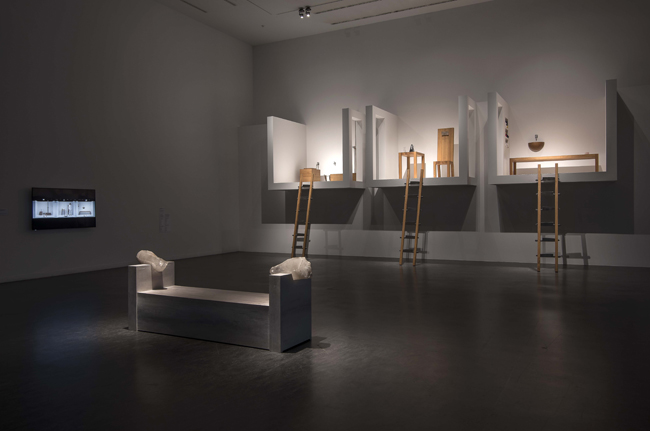
Marina Abramović, The Cleaner. Installation View. Centre of Contemporary Art, Toruń. Publicity photos
However, there are many other reasons – besides all these controversies – why the Marina Abramović retrospective should be seen as the event of the year. ‘It is up to the public how it is going to react. My job is to give 150 percent’, said Abramović on the eve of the opening of The Cleaner at Znaki Czasu in Toruń. And so she gave, as usual, her 150 percent, and so did the museum.
No matter if someone likes retrospectives or not, appreciates performance art or doesn’t consider it ‘high art’ (or art at all), or idolises Abramović or calls her a devil worshiper – The Cleaner is a show that doesn’t leave the viewer indifferent. An enormous amount of works (starting from the early, rarely seen paintings from the 60s through performances created together with her partner Ulay, and ending with the aforementioned The Artist Is Present) filled the entire two floors of the museum. Only the piece Counting Rice (2015) is presented separately on the ground level of the building and is thus taken out of the chronological tour, which makes perfect sense – not only because the work is the most recent in time, but for Abramović, the exercise of counting the rice represents a sort of psycho-physical ‘warm up’ in order to concentrate and get the body and mind ready for a performance. And upstairs, there is a lot that awaits the viewer.
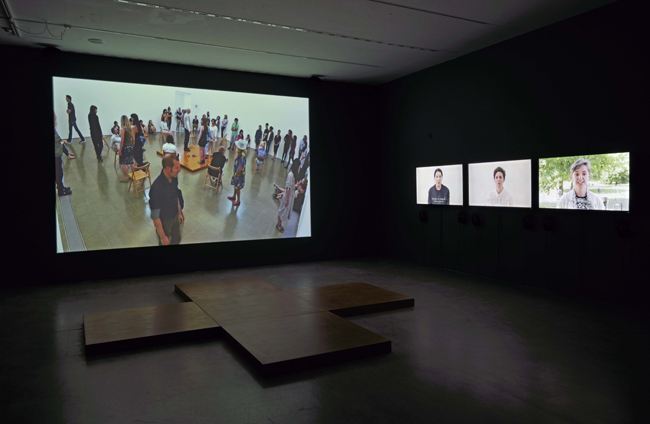
Marina Abramović, The Cleaner. Installation View. Centre of Contemporary Art, Toruń. Publicity photos
Unlike the exhibition at MoMA, The Cleaner doesn’t focus only on performance works. It’s a comprehensive overview of Abramović’s entire career – besides video documentation and re-performed actions, it also includes photographs, paintings, objects, early sketchbooks and writing. ‘I wanted to show as many works as possible, but without the latest ones, in order to enclose this retrospective in such a way that the viewer who will come could have, as much as possible, a fuller view of the whole – of her way of thinking,’ explains Kuczma.
It’s not an easy task to present an engaging retrospective of an artist for whom the relationship of scale, medium, and personal contact with the audience are key. It is a challenge in and of itself to present a performance work, which is focused so much on the physical presence of both the performer and the spectators, so that it is not only a dry, archive-like presentation of video documentation. Walking through The Cleaner, one can really feel, and even smell, the blood, tears, and pain (both physical and emotional).
When walking through the works, the design of the space (Abramović specifically requested that the top floor be painted red, which is where her work connected to the installation Balkan Baroque has been set up) and the way in which the works are displayed reflect not only the development of ideas and Abramović’s way of thinking, but also give one the impression of ‘being there’. For instance, when confronted with the wall-sized Rest Energy – one of Abramović’s most widely known works, in which together with Ulay she holds a bow and arrow that could have easily taken her life – and listening to the increasing heart rates of the performers, the visitor can begin to feel their own heart pounding along with those of the two artists.
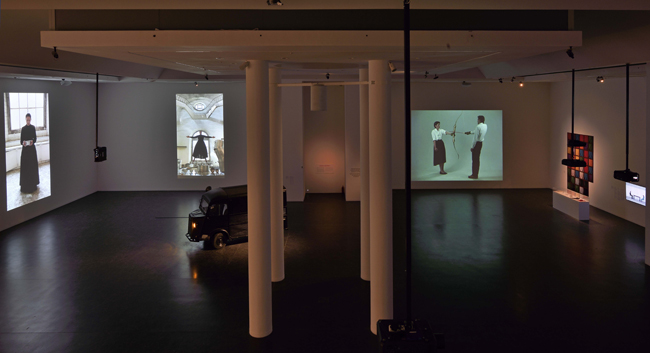
Marina Abramović, The Cleaner. Installation View. Centre of Contemporary Art, Toruń. Publicity photos
Although Abramović is against comparisons of performance to acting (‘With theater and acting, you create a distance which you don’t create in performance’, she told Klaus Biesenbach, the curator of her MoMA exhibition), there is something theatrical in the way the works are arranged within the space. The growing tension of their narrative – starting from the almost contemplative Rhythm 10, and reaching a climax with works such as Freeing the Voice or Balkan Baroque, to finally arriving at a denouement in the peaceful The Artist Is Present – is reminiscent of the dramatic structure of a play or opera (especially regarding the importance of sound in Abramović’s art).
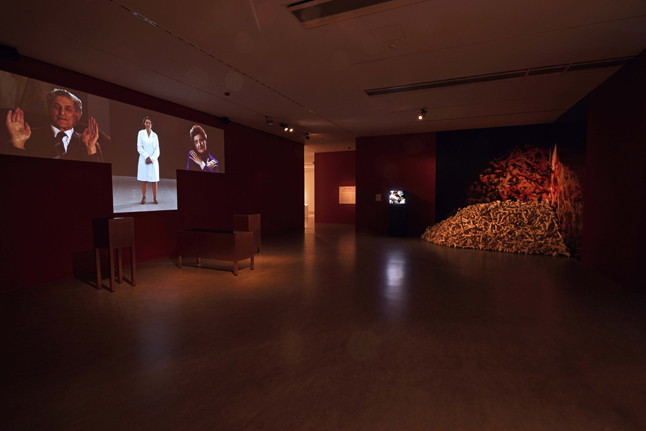
Marina Abramović, The Cleaner. Installation View. Centre of Contemporary Art, Toruń. Publicity photos
The works are so strong that they still resonate with viewers, even after many years after they were first performed and being devoid of the context of the space in which they happened. ‘A priest doesn’t need a cross,’ said Abramović at one point in the Matthew Akers’ documentary about the presentation at MoMA, The Artist Is Present. The whole space of the Centre of Contemporary Art is filled with her manifestation. ‘Going through this exhibition gives a picture of an artist who is one of the most spiritual people in the world […] What Marina does, these are authentic things. She's real. She herself is an artistic material, a material of art. She is art herself,’ said Kuczma. In the exhibition’s catalogue, he even refers to Rembrandt when speaking about Abramović: ‘Marina and Rembrandt circle around the irreality of art. They both face the challenge of spiritual change, being the enlightenment of the fallen, lost world. [...] Both of them, though from such distant times, by the means of their sense of responsibility, they encourage to reflect… at least to reflect.’ Thus, once again, whether someone is a believer of Marina Abramović’s ‘cult’ or, on the contrary, an adversary of it, ‘a good work of art should make you turn around when you are not looking at it’. And The Cleaner is a great opportunity to experience this phenomenon for oneself.
Marina Abramović, The Cleaner, Centre of Contemporary Art, Toruń, Poland (8.05. – 11.08.2019)
[1] https://www.tagesspiegel.de/gesellschaft/interview-mit-marina-Abramović-mit-70-muss-man-den-bullshit-reduzieren/13913260.html